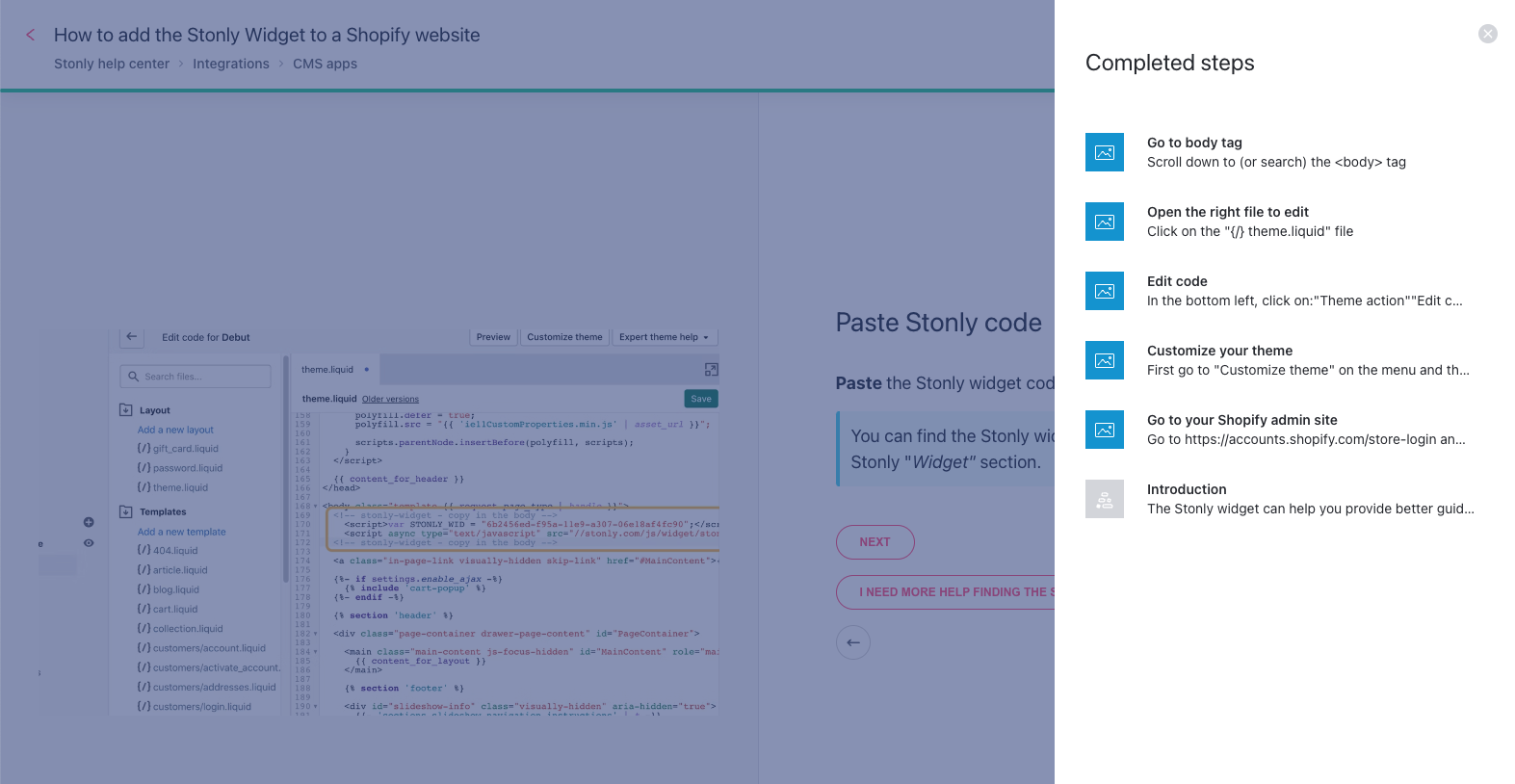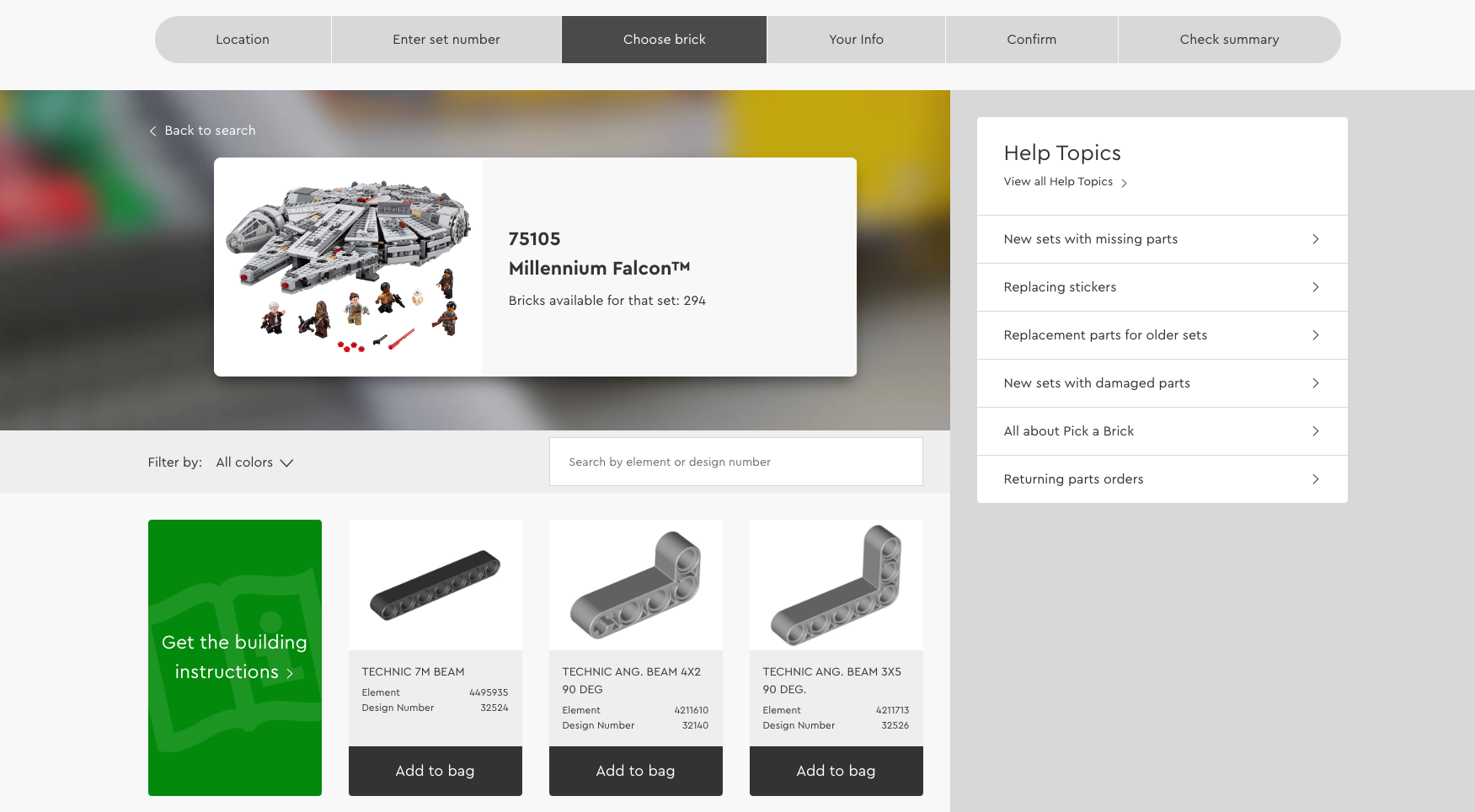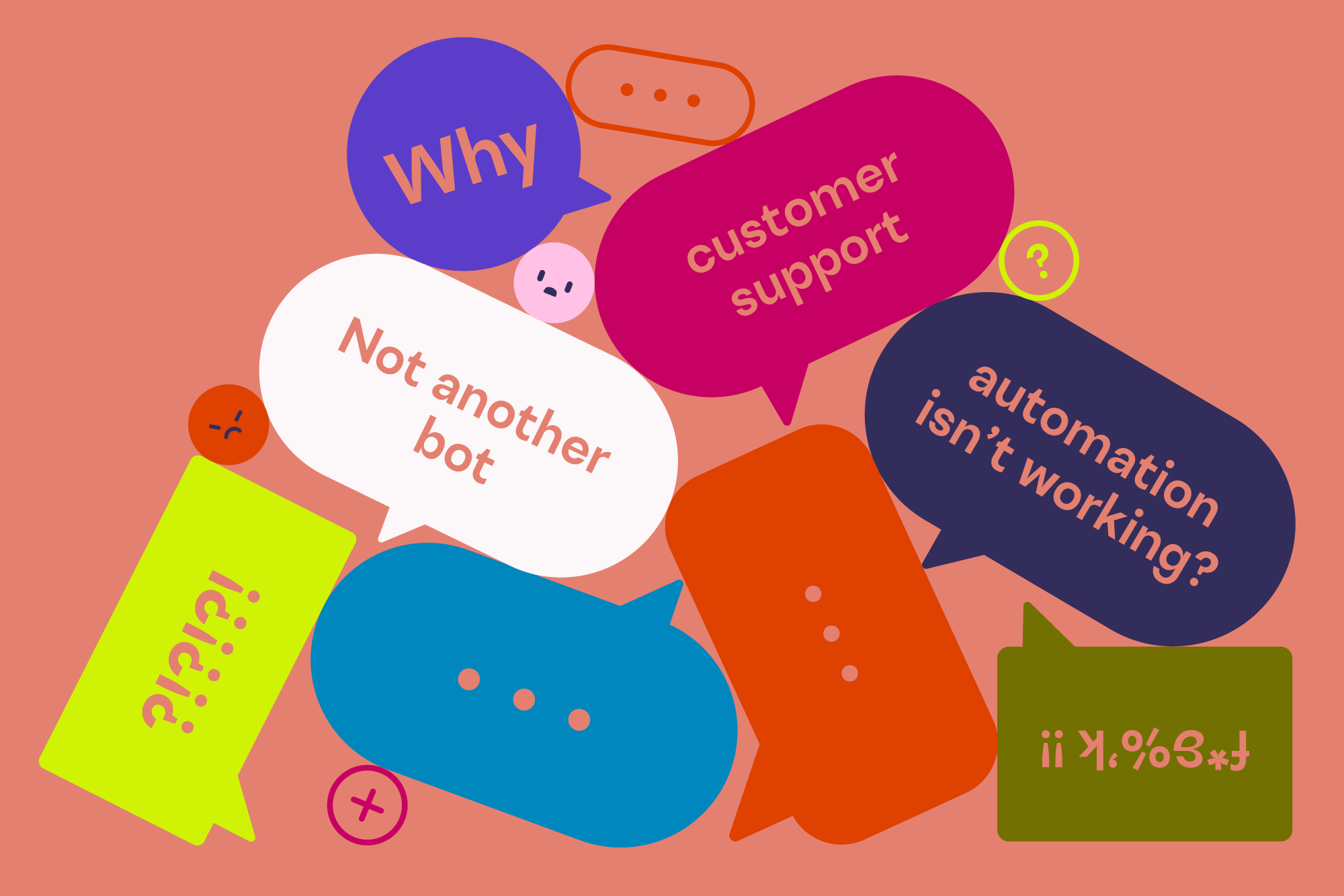Self-serve via customer support automation is booming in today’s instant-gratification world. In fact, 81% of customers attempt to take care of matters themselves before reaching out to a live representative, according to Harvard Business Review.
It’s also a win for customer support leaders challenged with scaling their teams and improving CSAT on limited budgets. Whenever a customer resolves an issue on their own, that’s one less ticket for your agents to handle.
In theory, a great self-service experience would enable your customers to solve their problems and answer their questions quickly, without ever having to deal with the inconvenience of contacting support. And if an inquiry is impossible to solve without an agent, your customer should be asked to provide qualifying information to speed up their on-the-phone experience.
Unfortunately, the self-serve experience with most customer support automation tools (like chatbots) leaves much to be desired. They’re frustrating, and they don’t actually solve your customers' issues.
Leave the old automation tools behind—try Stonly instead.
3 reasons customer support automation isn’t working
While the interest and need for customer support automation are high, the current methods aren’t working very well. Gartner reports that only 9% of customers can solve their problems completely using self-service. That’s a pretty dismal number.
Nearly 60% of consumers feel like companies have lost touch with the human element of customer experience (PwC).
You may need customer support automation, but your customers don’t want to feel like they’re a problem to be automated. They want to self-serve, but most aren’t able to do so successfully. Where does that gap come from?
Let’s examine some reasons customer support automation isn’t working well.
1. Heavy reliance on chatbots
Chatbots seem like an obvious solution for many companies.
They’re often marketed as extremely clever as if they can always understand a customer’s question and provide them with exactly what they need. Machine-learning and AI capabilities mean they even learn when they get a question wrong and improve over time. Since they can (and do) interact with customers directly, they’re basically a replacement for a human agent, right?
Not quite. The problem with chatbots is that they aren’t actually that clever.
Chatbot responses are often too repetitive and pre-formulated, making them sound like a robotic broken record. Most chatbots can’t handle the complex issues in a satisfying way, nor can they handle the endless variety of ways customers might describe the same problems. There’s an infinite number of stories of chatbots responding in embarrassing ways to unexpected questions.
It’s also common for chatbots to require your customers to rephrase their question multiple times, which is already extremely frustrating and creates a hurdle for people who want to contact you. Even then, they still might not hit the right keywords to get the answer they’re looking for—assuming the right answer is even in the system.
Too many chatbots are dependent on companies having a huge bank of knowledge base articles. There’s nothing inherently wrong with that, but when all the chatbot does is serve your customers with articles they could easily find themselves, that’s not a great experience. At that point, you’ll have invested a lot of time and money into a chatbot that’s essentially a glorified search engine.
It’s possible to bypass some of these issues with a truly intelligent chatbot solution, but these tend to be the top-of-market chatbots that are extremely expensive.
2. Too focused on ticket deflection
Another reason support automation isn’t working is that it’s solely an attempt to deflect tickets.
There’s nothing inherently wrong with aiming to deflect tickets. If you’re a high-growth business, you have to find ways to scale your support team efficiently. The problem occurs when ticket deflection becomes your primary self-serve support goal.
Deflection can quickly take precedence, leading to a negative impact on your overall customer experience.
Remember the stat above about how consumers feel most companies have lost the human element of customer experience? This is exactly how that happens. Chatbots are particularly good at making your customers feel devalued because they make it harder for them to get in touch with you.
Your main goal should be to help customers get the answers they need quickly and easily. Sometimes that means human contact is necessary. In those cases, the best thing you can do is make getting help as easy as possible. In many other cases, automation might be the best way to deliver a great customer experience. These are the areas that you should target your self-service efforts toward.
It’s easy to assume that your automation is successful if you only look at ticket deflection numbers. But there’s a hidden cost that you might not be measuring: the proportion of people that simply drop out because they’re frustrated. Create enough frustration, and these customers will probably churn shortly.

3. Ignores the customer journey
Automation often fails when it’s not incorporated into the customer journey.
It’s easy to add a widget to your product, whether it’s a chatbot, a knowledge base search, or something else. Whatever you offer should consider where your customer is coming from, what they’re trying to do, and where they’re likely to get stuck.
Which parts can be automated and which need to be handled by human support? How do they interact, and what does the handoff between the two look like?
You want to avoid an experience where your customer spends time searching for an answer, provides information about their issue, then finally gives up and gets in touch with your support team only to have to repeat themselves all over again.

When not to use customer support automation
There are some circumstances where automation might not be the answer. The biggest problem is if using automation creates a worse customer experience.
That can take many different forms:
- The customer clearly expresses they want human help, and you don’t give it to them immediately.
- The customer needs human contact to solve their problem. They can’t solve the issue any other way, but you force them to jump through hoops to get the required help.
- The customer has already tried and failed to solve the issue independently.
What to avoid with chatbots specifically
It’s also important to remember that many customers simply don’t want to interact with a bot.
Depending on the demographics of your customer base and how closely the chatbot design mirrors a live chat support option, many of them might not even realize they’re interacting with a bot. That can be a good thing, but if they think they’re talking to a human and find out it’s a bot later, you may be introducing extra frustration.
If automation is just making your customers more frustrated when they’re already annoyed because they have a problem they need help with, it will ultimately not be successful.
Can customer support automation be used in complex cases?
A common assumption regarding customer support automation is that it only helps in simple cases.
If your customer can self-serve an issue with a prepared template and the steps involved are always the same, that lends itself very easily to automation. The common belief is that if a case requires more back-and-forth and a deeper understanding of the problem, there’s no room for automation.
There’s some truth to that. Of course, it’s easier to automate a simpler issue.
That said, you can almost always use automation to narrow down the issue, no matter how complicated it might be. Automation can also help you collect information that will enable a quicker resolution. It can help you route the case to the correct agent or team. It can help you define the problem in more detail. Using automation in this way leads to a much faster resolution, even with complex issues.

Doing this well requires close attention to the whole customer journey. If you make the handoff to human support seamless and give your agents all the information they need to help, your customers will have a much better overall experience.
Should I stop offering self-serve support to my customers?
Not exactly. Automated customer service brings benefits that impact every aspect of your customer support:
- Some support is always available for your customers, without you having the overhead of managing a team that works 24/7.
- Your customers should be able to solve their issues efficiently and with minimal effort.
- Your team should have faster response and resolution times.
- Your operational costs should go down as you get better at handling more cases without human contact. You should be able to scale your team effectively.
- Your team should also be more satisfied and happy with their roles, as they handle fewer repetitive tasks and have more time for their cases.
All of these should considerably impact customer satisfaction and drive customer loyalty. Done right, your customers will walk away from every interaction feeling successful. Just because automation is challenging to get right doesn’t mean that massive potential isn’t there.
That sounds great in theory, but how do you actually get there?
How to deliver extraordinary customer support automation
Using an interactive and guided self-service experience to automate specific parts of your customer service is the best way to tackle most of the above challenges. That’s what sets Stonly apart.
Here’s how Stonly enables your team to get customer support automation right:
- Identify high-impact issues.
- Create customer-centric content that drives self-serve resolutions.
- Be proactive and offer customers help before they consider a ticket.
Start by looking at the issues that will impact your team most. That includes issues that:
- Are coming in at a high-volume
- Correlate to negative CSAT
- Connect to fundamental parts of your service (for example, refunds and returns or login problems)

Instead of going for a fake person approach through a chatbot, use Stonly to create personal, easy-to-follow content that guides your customers to the correct answers.
If an answer isn’t available, you can still design an excellent handoff experience for your support team so your customers always feel heard and never have to repeat themselves. Instead of causing frustration, you’ll help your customers solve their problems as quickly and efficiently as possible without ever feeling overwhelmed or lost.
Stonly’s unique solution enables self-serve support unlike anything else in the market.
We give customers choices and paths that help guide them. If you’ve ever wanted to challenge your assumptions about which cases you could solve through self-service and which ones can’t, Stonly is the tool to try.
Ready to provide a better self-serve support experience to your customers? Request a demo today!

